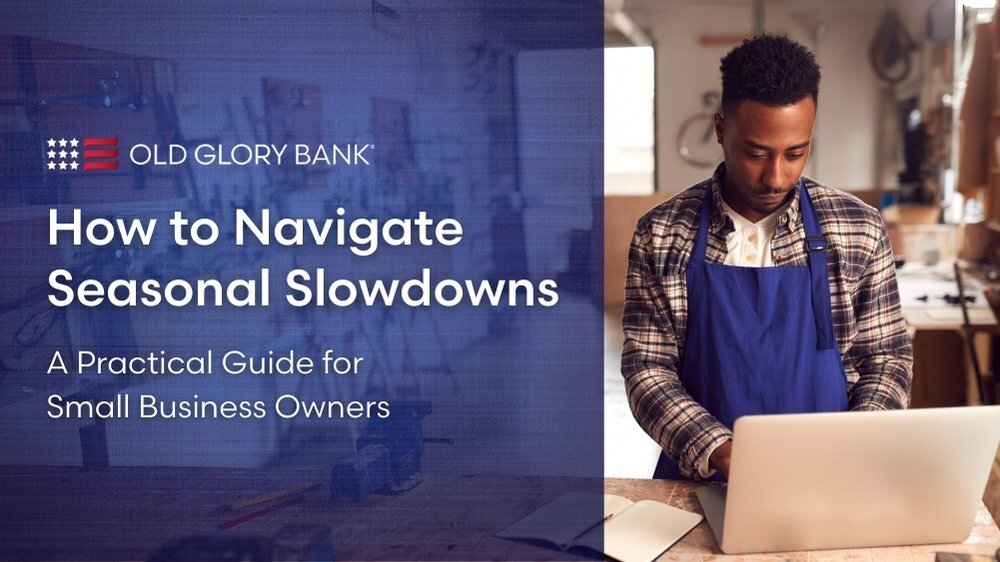What to do When Business Slows but Expenses Don’t
For many small business owners, summer brings more than sunshine—it brings some ups and downs.
Customer habits shift, foot traffic slows, and sales can become unpredictable. The problem: Your expenses don’t take a summer vacation.
Rent is still due, payroll remains, and bills pile up—whether revenue is soaring or creeping along.
If you’re wearing multiple hats and don’t have a full-time CFO watching the numbers, it can feel like you’re reacting to every curveball instead of planning ahead. Fortunately, with a few proactive steps, you can manage seasonal cash flow fluctuations without stress.
This article outlines practical, no-frills strategies for managing budgeting and cash flow through seasonal changes—especially during the unpredictable summer stretch.
1. Recognize Your Seasonal Trends
Seasonal dips are normal. What matters is whether you can see them coming.
Start by reviewing your last few years of monthly sales data. The example below gives you a sneak peek inside the dashboard Old Glory Bank business customers use to review this type of data:

Understanding when slowdowns typically occur helps you prepare—not panic.
According to SCORE, 82% of small businesses fail due to poor cash flow management, not lack of profitability.1
2. Separate Your Budget from Your Forecast
It’s easy to treat your budget like a prediction, but it’s really a financial plan that takes seasonal changes into account. Forecasting, on the other hand, is an ongoing process that pays close attention to changes in customer behavior.
- Budgeting: An annual plan that combines company goals, revenue, expenses, and potential ups and downs
- Forecasting: Combining past financial data with seasonal trends to make educated decisions
Your budget is a roadmap, and your financial forecast is more flexible and reactive. When you learn to balance both, you become more resilient to market swings.
3. Build a Seasonal Reserve in Advance
Think of it like a "rainy day fund." If spring is your busy season, set aside a percentage of your revenue—10% to 15% is a good start—to carry you through the slower months.
This fund will give you options and reduce stress when sales take an untimely dip.
4. Manage Spending with Intention
Slower sales don’t always mean you’re in trouble—but they do require smarter spending.
Here are three key actions:
- Pause or scale back: An annual plan that combines company goals, revenue, expenses, and potential ups and downs
- Negotiate terms: Combining past financial data with seasonal trends to make educated decisions
- Offer early-pay incentives: Combining past financial data with seasonal trends to make educated decisions
The goal is to preserve cash without hurting long-term relationships or operations.
5. Keep Customers Engaged, Even If They're Distracted
Summer isn’t just different for you—it’s different for your customers, too. Their schedules, habits, and needs experience a similar level of disruption. Adjust your offerings and messaging to stay relevant:
- Offer seasonal bundles or limited-time promotions.
- Promote gift cards or loyalty rewards for later use.
- Share helpful, seasonally relevant content in your email and social media.
Businesses that align their offerings with customer values and behavior build stronger loyalty—especially during unpredictable times.
6. Automate Your Financial Routine
You're busy. Automating routine financial check-ins gives you visibility without eating up hours each week:
- Set low-balance alerts on your accounts.
- Use apps for forecasting and scenario planning.
- Schedule a 15-minute, weekly finance check-in to update your forecast and review accounts.
Small, consistent habits are more effective than large, reactive changes.
The Key to Knowing Your Numbers
Summer (or any slow season) doesn’t have to be a stumbling block for your business. With better awareness of seasonal patterns and a few key metrics, your business can leverage these changes rather than fear them.
The cornerstone of this shift to year-round resilience begins with knowing your numbers.
That’s why Old Glory Bank is bringing in a cash flow expert to help us host a free, Know Your Numbers Workshop on May 22.
Whether you’re a successful small business owner wanting to save time, thinking about a side hustle, or feeling overwhelmed as an entrepreneur wearing too many hats, this online event is for you.
There’s no cost to attend, but space is limited. Follow the link below to reserve your spot now:

1 Sutter, B. (2019, June 1). The #1 Reason Small Businesses Fail – And How to Avoid It. SCORE.

